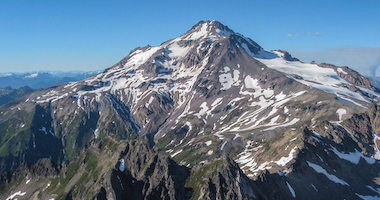Preparing for a McKinley climb involves physical conditioning, technical skills, and high-altitude acclimating. The summit of McKinley stands at 20,310 feet, and the effects of altitude can pose significant challenges to climbers. Proper acclimatization and altitude training are crucial for a successful and safe climb. This blog will explore strategies and tips for preparing your body to handle McKinley's thin air and demanding conditions.
Understanding Acclimatization
Acclimatization is how your body adapts to lower oxygen levels at high altitudes. Proper acclimatization helps prevent altitude sickness, ranging from mild symptoms like headaches and nausea to severe conditions such as High-Altitude Pulmonary Edema (HAPE) or High-Altitude Cerebral Edema (HACE). The key to acclimatization is a gradual ascent, allowing your body time to adjust.
Gradual Ascent and Acclimatization Schedule
Creating an Ascent Schedule is vital to successful acclimatization. This schedule includes planned rest days at strategic elevations and “Cache Days,” where you ascend to a certain height but then sleep at a lower elevation, allowing climbers to acclimate before spending more time at elevation. RMI builds four acclimatization days and four cache days into our typical McKinley schedule. Here's a typical acclimatization schedule for RMI’s McKinley Expeditions above 10,000 feet:
- Day 5—Ski Hill to Cache (10,200): We leave camp and climb up the glacier to cache a load of food and fuel near Kahiltna Pass. We then return to the base of Ski Hill for the night.
- Day 7—Acclimatization Day at 11K Camp: Spend the day resting, reviewing crampon and self-arrest techniques, and sorting loads in anticipation of our carry day.
- Day 8—11K Camp to Cache (13,400'): Our cache site is at 13,500'. After leaving our load of group food, fuel, and personal items, we descend back to our tents at 11K Camp.
- Day 9—Acclimatization Day at 11K Camp: This is an important acclimatization day before our move to 14K Camp. We spend the day resting, hydrating, eating, and organizing our loads for the move.
- Day 11—14K Camp to Cache (13,500'): We retrace our steps and descend to our cache site at 13,500'. After retrieving our gear, we return to 14K Camp to spend the afternoon improving our camp and relaxing.
- Day 12—Acclimatization Day at 14K Camp: The focus of the day is to rest, hydrate, and let our bodies start to adjust to this new altitude. We practice fixed-line travel and running belays and sort another load of gear, all in preparation for our carry onto the West Buttress.
- Day 13—14K Camp to Cache (16,200'): Depending on time, weather, route conditions, and energy level, we may opt to make our cache at the top of the fixed lines or travel higher along the West Buttress towards 17K Camp before caching. After leaving our loads, we return to 14K Camp for the evening.
- Day 14—Acclimatization Day at 14K Camp: Depending on the weather, we may stretch our legs and take a short walk across Genet Basin to the Edge of the World. From here, we can look down almost 7,000' to the Northeast Fork of the Kahiltna, see our first camp at the Base of Ski Hill, and look across the valley to stunning views of 17,402' Mt. Foraker.
We typically don't do any caching or acclimatization days at High Camp (17,200').

Training for altitude
To effectively train for altitude, you need to focus on several key areas:
Physical Training
Cardiovascular Fitness: Building a solid cardiovascular base is essential for acclimatization. Do aerobic exercises such as running, cycling, and swimming to improve your heart and lung capacity. Aim for at least 45-60 minutes of cardio workouts four to five times a week. As your fitness improves, incorporate interval training to enhance your aerobic threshold.
Strength Training: Climbing McKinley requires significant strength, especially in your legs and core. Include exercises like squats, lunges, deadlifts, and core workouts. Strengthening these muscle groups will help you handle the heavy loads and steep ascents on McKinley.
Simulated Altitude Training: If you have access to a high-altitude training facility or hypoxic chamber, take advantage of it. These facilities simulate low-oxygen environments, helping your body adapt to high altitudes. Alternatively, consider using a high-altitude mask during training to mimic the reduced oxygen levels.
High-Altitude Hikes: Whenever possible, incorporate high-altitude hikes into your training. Hiking at elevations above 8,000 feet helps your body get used to lower oxygen levels. Plan weekend trips to nearby mountains to gain experience and build altitude tolerance.
Acclimatization Techniques
Hydration: Staying well-hydrated is crucial for acclimatization. Drink plenty of water throughout your training and during the climb. Dehydration can exacerbate altitude sickness, so aim to drink at least 3-4 liters of water daily while on the mountain.
Nutrition: A balanced diet of carbohydrates, proteins, and fats supports your body during acclimatization. Carbohydrates are essential as they provide quick energy. Bring high-calorie snacks and meals to maintain your energy levels.
Rest and Recovery: Allowing your body adequate time to rest and recover is vital. Ensure you get enough sleep and include rest days in your training schedule. Overtraining can weaken your immune system and increase the risk of injury.
Breathing Techniques: Deep breathing exercises, such as diaphragmatic breathing and controlled breathing patterns, can improve oxygen intake and help you manage breathlessness at high altitudes.
Mental Preparation
Visualization: Mental preparation is just as essential as physical training. Visualization techniques can help you mentally prepare for the challenges of high-altitude climbing. Imagine yourself successfully navigating difficult sections of the climb and reaching the summit.
Stress Management: High-altitude environments can be mentally taxing. To build mental resilience, practice stress management techniques such as meditation, mindfulness, and yoga. Staying calm and focused is crucial for making sound decisions on the mountain.

RMI's Training Resources
At RMI, we provide comprehensive training resources and programs to help you prepare for McKinley. Our Expedition Skills Seminars on Mt. Rainier, Mt. Baker, and Ecuador and Peru offer hands-on training in high-altitude environments, teaching you the skills to acclimatize and climb safely. Our experienced guides will work with you to develop a personalized training plan tailored to your needs.
Proper preparation for acclimatization and altitude is critical for a successful McKinley climb. Focusing on cardiovascular fitness, strength training, and high-altitude exposure can enhance your body's ability to adapt to McKinley's demanding conditions. Combine this physical preparation with mental resilience and the proper techniques, and you'll be well on your way to reaching the summit.
















